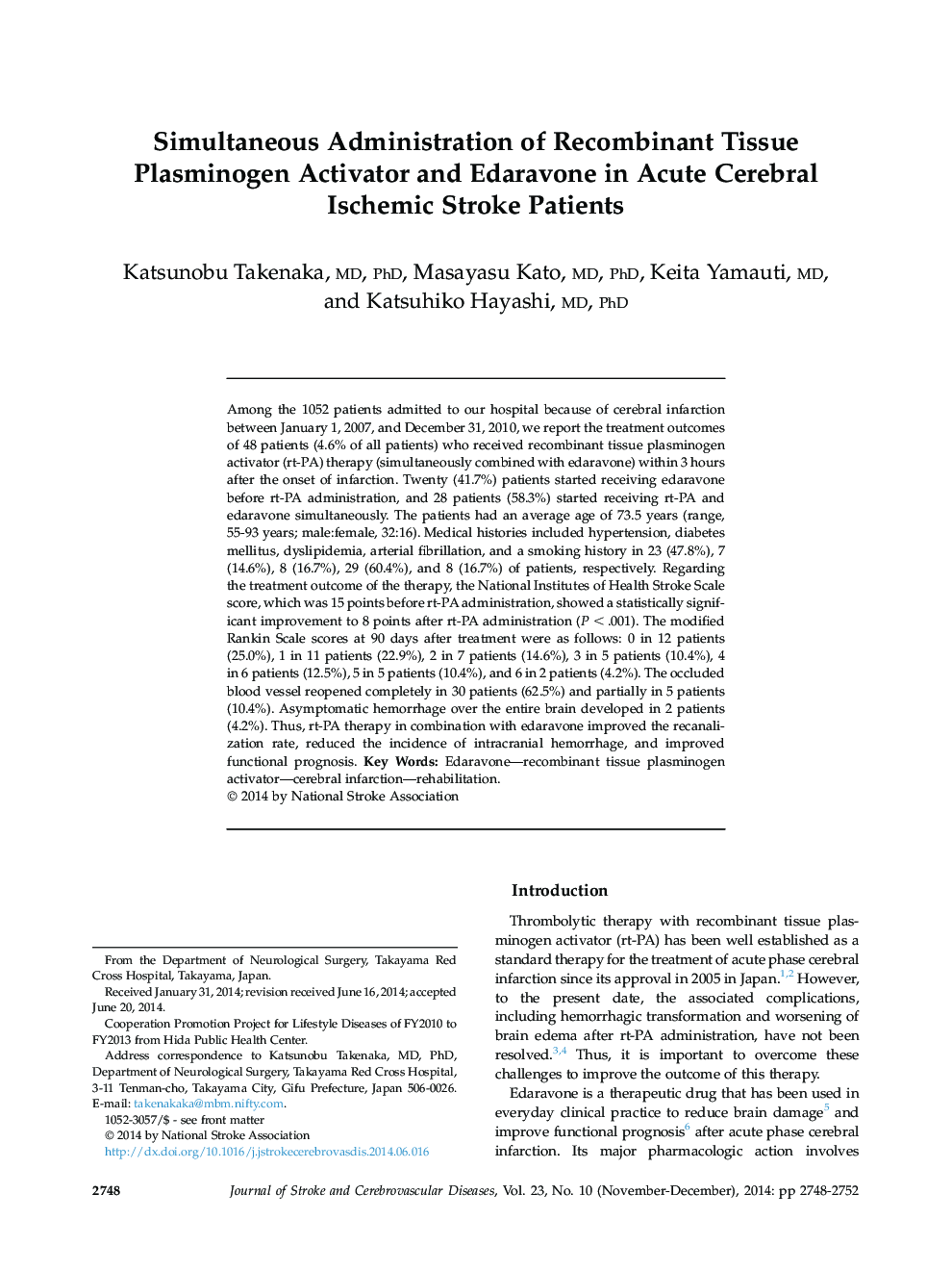| Article ID | Journal | Published Year | Pages | File Type |
|---|---|---|---|---|
| 5874075 | Journal of Stroke and Cerebrovascular Diseases | 2014 | 5 Pages |
Abstract
Among the 1052 patients admitted to our hospital because of cerebral infarction between January 1, 2007, and December 31, 2010, we report the treatment outcomes of 48 patients (4.6% of all patients) who received recombinant tissue plasminogen activator (rt-PA) therapy (simultaneously combined with edaravone) within 3Â hours after the onset of infarction. Twenty (41.7%) patients started receiving edaravone before rt-PA administration, and 28 patients (58.3%) started receiving rt-PA and edaravone simultaneously. The patients had an average age of 73.5Â years (range, 55-93Â years; male:female, 32:16). Medical histories included hypertension, diabetes mellitus, dyslipidemia, arterial fibrillation, and a smoking history in 23 (47.8%), 7 (14.6%), 8 (16.7%), 29 (60.4%), and 8 (16.7%) of patients, respectively. Regarding the treatment outcome of the therapy, the National Institutes of Health Stroke Scale score, which was 15 points before rt-PA administration, showed a statistically significant improvement to 8 points after rt-PA administration (PÂ <Â .001). The modified Rankin Scale scores at 90Â days after treatment were as follows: 0 in 12 patients (25.0%), 1 in 11 patients (22.9%), 2 in 7 patients (14.6%), 3 in 5 patients (10.4%), 4 in 6 patients (12.5%), 5 in 5 patients (10.4%), and 6 in 2 patients (4.2%). The occluded blood vessel reopened completely in 30 patients (62.5%) and partially in 5 patients (10.4%). Asymptomatic hemorrhage over the entire brain developed in 2 patients (4.2%). Thus, rt-PA therapy in combination with edaravone improved the recanalization rate, reduced the incidence of intracranial hemorrhage, and improved functional prognosis.
Related Topics
Health Sciences
Medicine and Dentistry
Clinical Neurology
Authors
Katsunobu MD, PhD, Masayasu MD, PhD, Keita MD, Katsuhiko MD, PhD,
